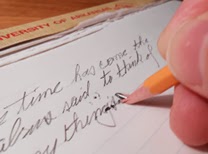New satellite-Visual literacy with Google Earth

Most real problems have a geographic factor. Google Earth is a superb application for educators and problem solvers, one that is constantly improving. One problem has been the display of fuzzy to high quality images from satellite images that might be up to several years old, depending on whether you were rural or in a fast growing high population area. The San Francisco bridge image on the left is an example of the high quality to which Google is soon switching (click image for larger photo) for all its images. The company GeoEye launches the GeoEye-1 on Sept 4, 2008, just days away. According to Google's Hurowitz, it "has the highest ground resolution color imagery available in the commercial marketplace and will produce high-quality imagery with a very accurate geolocation." At highest quality, a twenty-two inch (.41 meter) area in black and white or 1.65 meters in color will make up 1 pixel. In one click it can capture great quality of an area the size of the state of New Mexico. Further, it could produce these high quality maps of the entire United States every 30 days.
It will be almost two months after launch before the new images begin to flow into Google's databases, then another month or so to complete the set of overlapping maps for the U.S. This means the end of the semester will be a good time to re-visit the satellite image of your school or other locations. Could be fun to screen capture the best resolution now, then again to compare at the end of November.

Comments